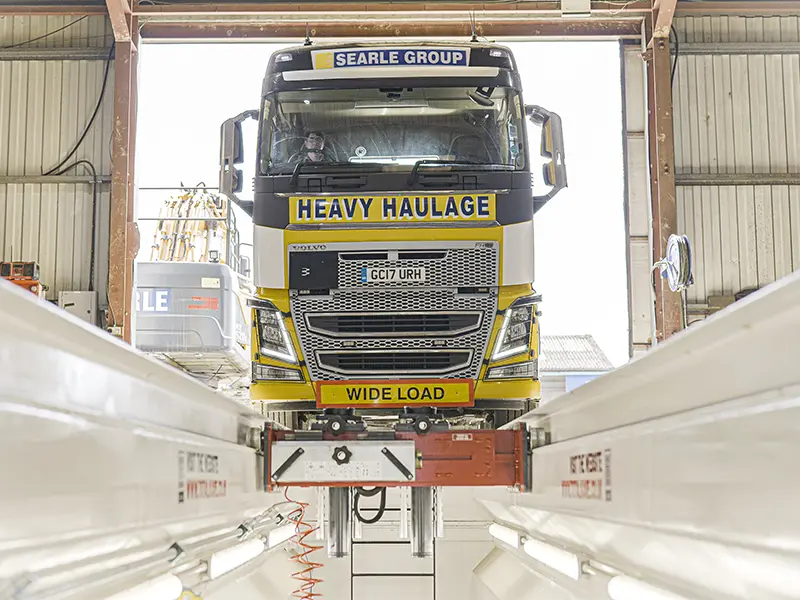We’ve talked before about the hidden costs of poor wheel alignment – from wasted fuel and tyre wear to dangerous drifts and driver exhaustion.
Those are all real problems for workshops and fleets. And they each come with their own costs and risks.

But how much of a problem are they exactly?
Here are the hard numbers you need to know.
How Does Wheel Alignment Affect Fuel Consumption?
When your wheels are out of alignment, they’re not working as a team. They’re pulling and pushing against each other in different directions – and that means your vehicles need to work harder to get through the same journeys.
That extra work comes at a price – with reduced fuel efficiency and an increase in your fuel consumption per mile travelled.
So how much extra fuel are we talking, exactly?
As you’d expect, there’s no magic number that applies to every situation. It all depends on the type of vehicle, the condition of the tyres and the steering system, and the extent to which your wheels are out of alignment.
But as a general rule: a vehicle with improper alignment can burn through 10% more fuel than it needs to.
That might not seem like much when it’s one small vehicle doing a few small trips.
But when you’re running a fleet of trucks with a £100,000 fuel bill?
That’s an extra £10,000 that could have been avoided with regular wheel alignment check-ups.
How Does Wheel Alignment Affect Your Steering?
We all know that poor wheel alignment can cause your vehicles to drift to one side.
That’s a problem for your fuel efficiency, and it leads to extra wear on your tyres on your suspension.
But there’s an even more dangerous effect of vehicle drift – and that’s an increased risk of accidents on the road.
There’s an obvious risk when your vehicles are veering across the road. And that risk only increases when you start thinking about your drivers.
They need to constantly correct their course to combat the drift – sometimes for hours on end. And that continual extra effort means your drivers get exhausted faster, putting them at greater risk of making a dangerous mistake.
So how much drift does poor wheel alignment really cause?
Just like your fuel consumption, there are a lot of variables at play. It all depends on the size of the vehicle and its wheels, as well as the condition of your tyres and the steering system.
But as a rule of thumb: a wheel that’s just 2mm out of alignment can cause a sideways drift of 24 feet for every mile travelled.
That’s a massive sideways distance for a relatively short slice of the average journey. And when you put that in perspective, it only gets worse:
With a truck travelling at 60mph, that’s the equivalent of crossing 2 or 3 lanes on a motorway once every minute – on a journey that could last for hundreds of minutes.
It’s enough to wear down even the most resilient drivers. And it’s a significant risk that can easily be prevented.
How Does Wheel Alignment Affect Your Tyres?
If you’re driving with poor wheel alignment, you’re placing extra strain on your wheels. That extra strain causes unnecessary wear and tear on your tyres, reducing their lifespan and adding to your costs.
But just how much extra wear does an improper alignment create?
With wheels just an eighth of an inch out of alignment (3.175mm), your tyres suffer from an extra 20% wear.
To make things worse, it’s not an even wear. Instead of spreading the damage equally from normal wear and tear, a poor wheel alignment can focus all the wear on just one side of the tyre – which means your tyre treads go past the legal limit even faster than they normally would.
But with the right check-ups and maintenance, you can expect huge positive results:
With regular wheel alignments, you can extend the life of your tyres by up to 12,000 miles.
For the average commercial fleet, that’s an extra few months of life squeezed out of every set of tyres – which has a massive positive impact on the costs of running your vehicles.
Ready to Put These Worries to Rest?
We’ve seen the hard numbers – and the statistics don’t lie.
Ignoring your vehicles’ wheel alignment can have huge consequences for your fleet and your business – from extra fuel costs and excessive tyre changes to dangerous driving conditions and increase risk of accidents.
So if your fleet needs a tune-up (or you’re looking to invest in bringing wheel alignments in-house) check out our Totalkare Electronic Wheel Alignment System in our online store – or send us a message to find out more.
This article was originally published by Totalkare Ltd.















